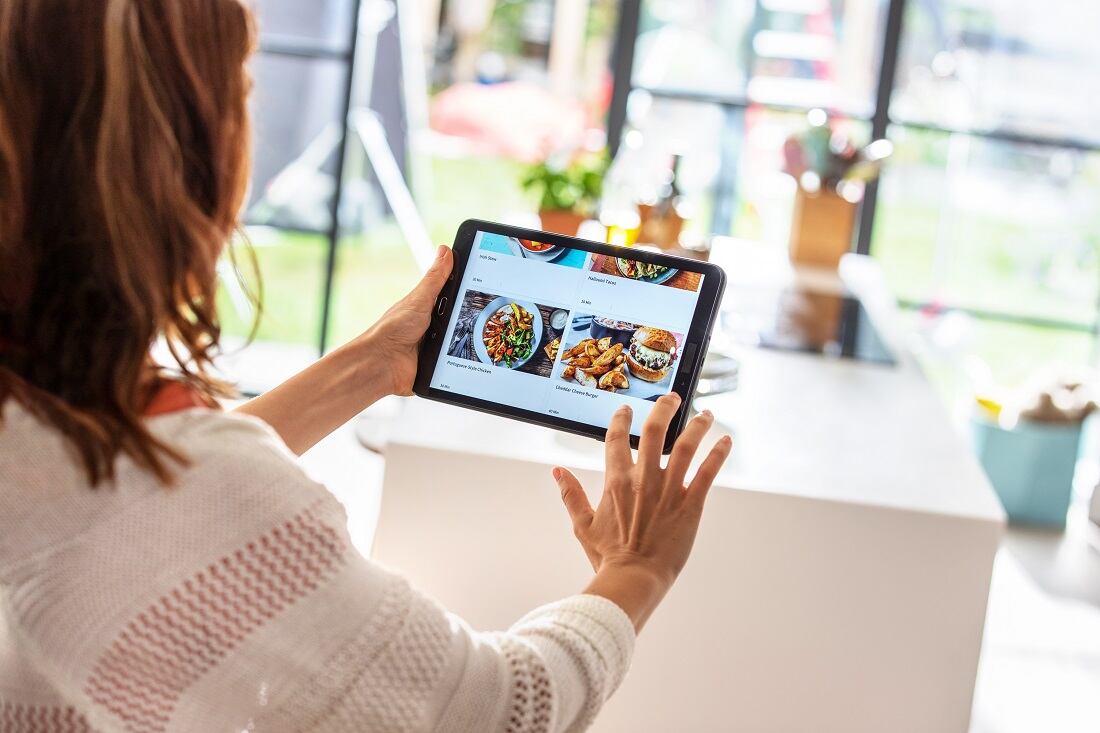Launching earlier this month, Blue Apron’s campaign centers on two main marketing messages – ‘be a hero’ and ‘expect the unexpected’ – both of which target the 54% of US consumers who are not only new to Blue Apron, but the meal kit category overall. As such, they focus on the fundamentals of how meal kits work as well as the benefits, including convenience, flexibility, discovery and personalization.
Blue Apron’s back-to-basics approach extends beyond messaging to include the delivery platform with the company’s first television ad in nearly four years – a move that chief marketing officer Dani Simpson acknowledges could be risky, but which she told FoodNavigator-USA could also deliver high rewards.
Riding television’s resurgence
With the rise of social media and the ability to interact directly with consumers as well as track their engagement and follow them across the platform, television fell out of favor with many small and mid-size companies over the past decade.
But Simpson says she believes TV is have a “resurgence” and can provide the company access to new consumers who are not constantly surfing or scrolling and new insights, thanks to the rise of connected television.
She also notes that TV’s appeal has grown in part because the EU’s General Data Protection Regulation, designed to protect social media users’ privacy, has reigned in advertisers’ tracking capabilities of consumers online. While connected TV provides some visibility into consumers’ habits, and also limits their ability to skip or block ads the same way they can across other media.
“If you combine CTV and TV in terms of your media buying, you not only get some significant efficiencies, but you also get some day-to-day results about who is viewing your CTV and TV advertisements in a way you couldn’t get in the past,” she explained.
Simpson added that by ‘piloting’ a television ad over the next six weeks, Blue Apron hopes to “move the needle and really get that brand reach that we haven’t gotten in many years” by reconnecting with consumers who favor ‘unplugging.’
“The mission for me last year was to really diversify our channel mix, certainly from where we were in 2018 when we removed a lot of different channels and were really 100% performance marketing in 2019 and 2020,” Simpson said. “Really, we are looking to open everything up – diversifying the marketing mix, making sure that we don’t have all our eggs in the digital basket with the cookieless future very much upon us.”
Because television, by its nature, offers a broader but less personalized approach, Blue Apron is using it to raise general brand – and category – awareness through its “being a hero” spot.
In the ad, Blue Apron acknowledges that while being a hero at home often includes providing nutritious and delicious meals, it also might also mean taking cooking shortcuts so there is more time to for the rest of life -- whether playing with kids or pursuing a hobby. With this in mind, it shows how pre-portioned ingredients in meal kits save time, but with more than 50 options consumers can also discover new flavors, dishes and cuisines with a learning curve that isn’t as steep.
Showcasing the benefits of the meal kit category as a whole is a bit “risky,” because it benefits competitors as well as Blue Apron, Simpson said. But she is also confident in the quality, variety and execution of Blue Apron, which she says stands out against the competition.
She adds she also hopes by educating consumers about meal kits in general, Blue Apron can become synonymous with ‘meal kits,’ making it the first brand consumers think of and go to.
How the TV spot performs will inform Blue Apron’s use of the platform going froward, but Simpson predicts that the company will use television for special occasions – like around the holidays – given its expense and limitations around personalization.
Online video series complements and extends television’s reach
To supplement the television ad, and more directly target different consumer groups, Blue Apron also launched this month a series of online videos that focus on the company’s +1 philosophy to make each recipe special with exceptional flavor, new cooking techniques and tips to streamline prep and cleanup.
These spots take meal kits far from their origin as a special occasion or data night at home activity, to show how they are solutions for different pain points, such as offering healthy meals that are also flavorful or getting kids to eat and enjoy their vegetables.
Simpson said each episode in the series talks to a different audience in a way that is relevant and emotional, but also highlights the functional benefits of meal kits.
Even though the campaign includes many new marketing tactics, it also holds on to tried and true strategies – including offering $110 off if viewers visit the company’s website for more information and to sign up.
This strategy of deep discounting came under fire several years ago when the meal kit category as a whole was spending significant amounts on customer acquisition but then failing to hold on to them as shoppers bounced between services to maximize discounts. However, in today’s inflationary environment when consumers are increasingly budget conscious, the strategy could resonate again.
A more streamlined and welcoming sign-up experience
Along with the new ads, Blue Apron also recently revamped its sign-up experience to be more welcoming and user-friendly.
For example, now it is easier for consumers to select dietary preferences and ensure that meal kits fit their lifestyles.
The company also ditched references to “family size” in the ordering process and now simply notes how many servings come in each box. Simpson said the old language – family of two or four – was limiting and potentially alienating to single people or others living together but who don’t consider themselves ‘family.’
Ultimately, Simpson said, these small but notable shifts in combination with the new ads are about enhancing the entire customer acquisition experience and helping usher in new users so that they are comfortable and, hopefully, loyal.




